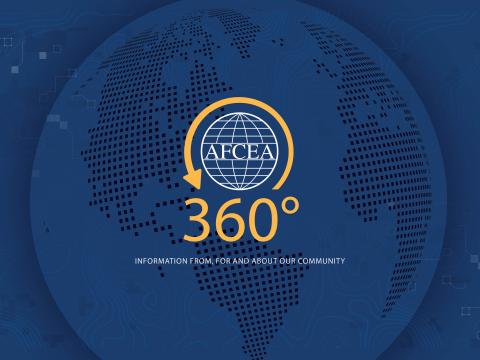President's Commentary: Bringing Intelligence Together
Today’s intelligence community is facing new challenges. That in and of itself is not new; the community has been evolving for decades. What is new is both the changing nature of the threat and the approach that must be taken to meet it.
Today’s intelligence community is facing new challenges. That in and of itself is not new; the community has been evolving for decades. What is new is both the changing nature of the threat and the approach that must be taken to meet it.
At the top of everyone’s solution list is information sharing. As intelligence information is collected, it must be shared among agencies, civilian government organizations, including the law enforcement community, and international partners. And, this information must be accurate and effective, not merely comprehensive.
Today’s multisource intelligence offers its own spate of challenges along with potential benefits. So much information is coming from the growing number of sensors feeding the intelligence data pool that the intelligence community must be able to find valuable nuggets amid the mountain of data. Unfortunately, our collection processes have outpaced our ability to maintain control over the information they generate.
The human element cannot properly process everything that is out there. So, the key is having an analytic capability that can digest the data and put it in a context that has veracity and can be understood in a timely manner. Intelligence is much more than information gleaned from multiple sources. A lot of information coursing throughout the open-source world is misinformation.
This task is complicated by the evolving threat picture. When the U.S. intelligence community was built in the years immediately following World War II, its construct was based on collection methods. The CIA constituted human intelligence, the National Security Agency focused on signals intelligence and the Defense Intelligence Agency concentrated on defense-related issues and methodologies.
Now, gone are the days when the Free World faced an easily defined monolithic threat and could tailor its intelligence accordingly. A host of threats have emerged and their approach to confrontation varies. The intelligence community must anticipate new threats as well as try to predict adversarial activities. This will require automated intelligence capabilities, including machine-to-machine activities. Above all, intelligence data must be consolidated in a way that generates products serving vital customer needs.
James Clapper, the director of national intelligence, has emphasized the need for intelligence integration. From a budgetary sense alone, that is key for the future—the limited resources the community faces over the next few years mandate this approach. But this integration also benefits the user community, as the customer receives a product that is richer and more accurate. Not only does multisource intelligence provide a broader spectrum of information, the different sources also can vouch for each other’s veracity. We need the strongest synergy possible among the various intelligence organizations in the community for their ability to collect, analyze and disseminate vital knowledge.
That synergy is beginning to take place. Close to home, AFCEA is playing its own role striving to enable this integration in a targeted fashion. The association has built a community for intelligence professionals in which private sector and government intelligence experts can engage in a number of activities to the benefit of both sectors. One of AFCEA’s most active and effective committees is its Intelligence Committee, which comprises association members from all corners of the community, including senior leaders. AFCEA also has the Emerging Professionals in Intelligence Committee (EPIC), which focuses on further developing intelligence community professionals under the age of 40 by providing them tutelage and access to senior intelligence executives from across industry and government. Designated industry days, both classified and unclassified, enable government and industry professionals to share information. The National Intelligence University Foundation allows the association to advance the cause of the government’s degree-granting intelligence university. And, above all, AFCEA is striving to integrate intelligence among all of the association’s elements and activities.
For the long term, the community’s collection-oriented intelligence model may have to give way to a new approach that is geared more toward the threat than the means of its discovery. Ultimately, the intelligence community of the future may resemble little of the intelligence community of today. That maturation may be the most important key to ensuring the continued peace and security of the Free World.




Comments